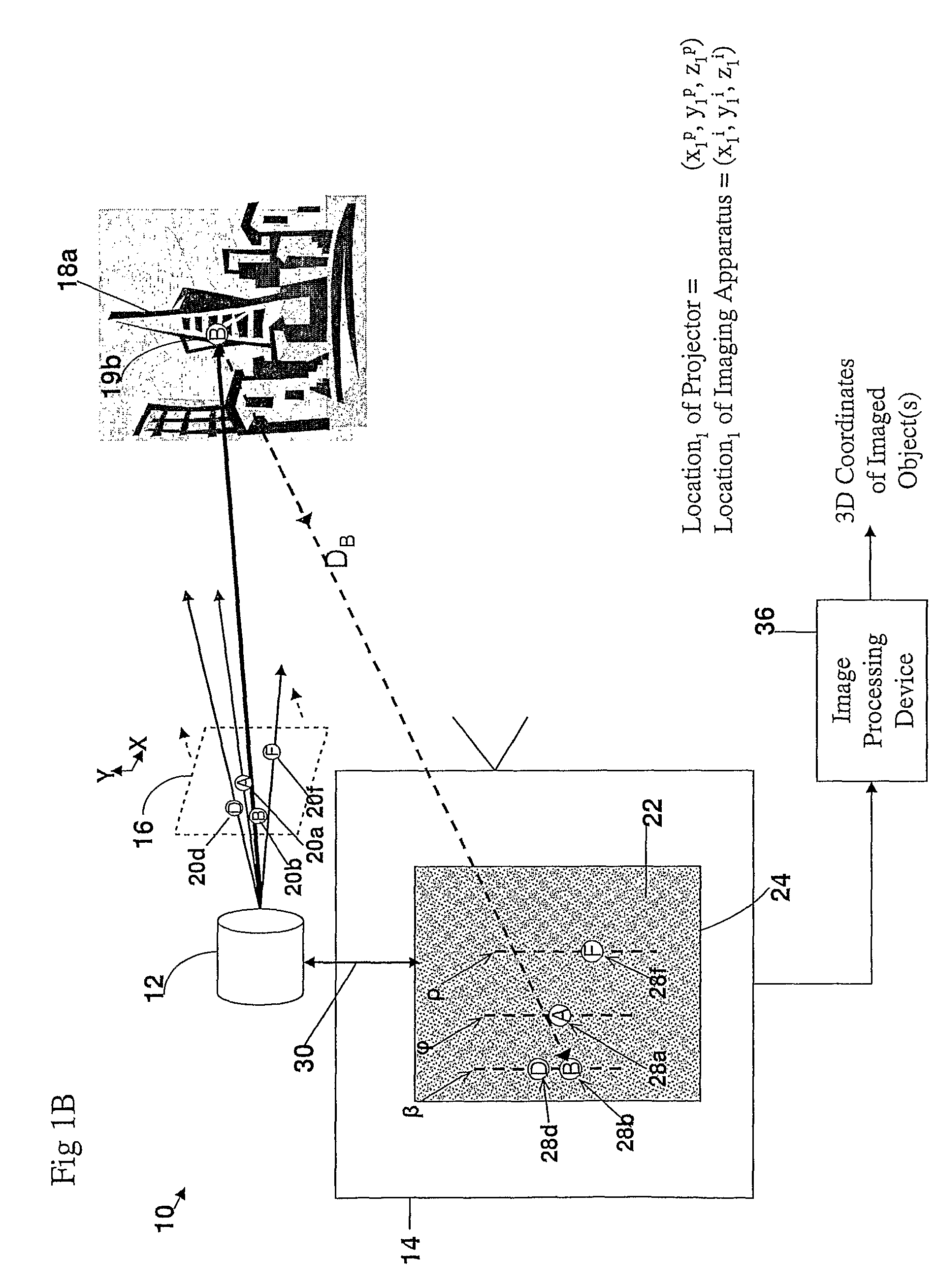3D geometric modeling and 3D video content creation
a technology of geometric modeling and 3d video content, applied in the field of three dimensional imaging and depth measurement of objects, can solve the problems of inherently inferior accuracy and resolution to that obtained in triangulation methods, automatic correspondence algorithms often contain an abundance of errors in matching shots from different cameras, and are not error-prone and non-robus
- Summary
- Abstract
- Description
- Claims
- Application Information
AI Technical Summary
Benefits of technology
Problems solved by technology
Method used
Image
Examples
Embodiment Construction
[0282]The present embodiments provide an apparatus and a method for three dimensional imaging of static and moving objects. In particular, it is possible to determine three-dimensional spatial shape data of a given object(s) by (a) projecting an encoded bi-dimensional light pattern on the object(s); and (b) analyzing a 2D image of the reflected bi-dimensional light pattern utilizing the optical constraints and principles associated with epipolar geometry and triangulation.
[0283]The principles and operation of an apparatus and method according to the present invention may be better understood with reference to the drawings and accompanying description.
[0284]Before explaining at least one embodiment of the invention in detail, it is to be understood that the invention is not limited in its application to the details of construction and the arrangement of the components set forth in the following description or illustrated in the drawings. The invention is capable of other embodiments ...
PUM
 Login to View More
Login to View More Abstract
Description
Claims
Application Information
 Login to View More
Login to View More - R&D
- Intellectual Property
- Life Sciences
- Materials
- Tech Scout
- Unparalleled Data Quality
- Higher Quality Content
- 60% Fewer Hallucinations
Browse by: Latest US Patents, China's latest patents, Technical Efficacy Thesaurus, Application Domain, Technology Topic, Popular Technical Reports.
© 2025 PatSnap. All rights reserved.Legal|Privacy policy|Modern Slavery Act Transparency Statement|Sitemap|About US| Contact US: help@patsnap.com



